LG 34GK950F Curved Gaming Monitor Review: 144Hz Ultrawide With HDR
Why you can trust Tom's Hardware
HDR Performance
The 34GK950F conforms to the VESA DisplayHDR 400 standard, meaning it can produce over 400 nits peak white output. Since LCD monitors are limited in how low their black levels can be, the only way for them to increase contrast is to up their brightness quotient. Further enhancements come from full-array backlights and effective dynamic contrast algorithms. This LG provides passable HDR commensurate with its price point. If you want the ultimate presentation, it will come at a very high cost.
HDR Brightness and Contrast
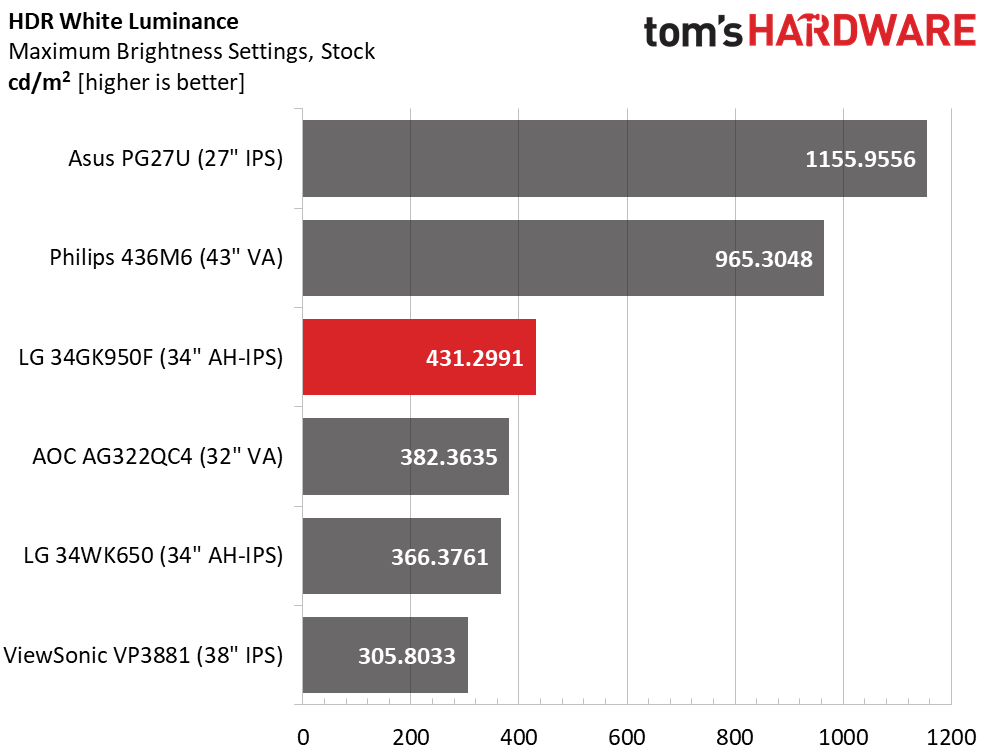
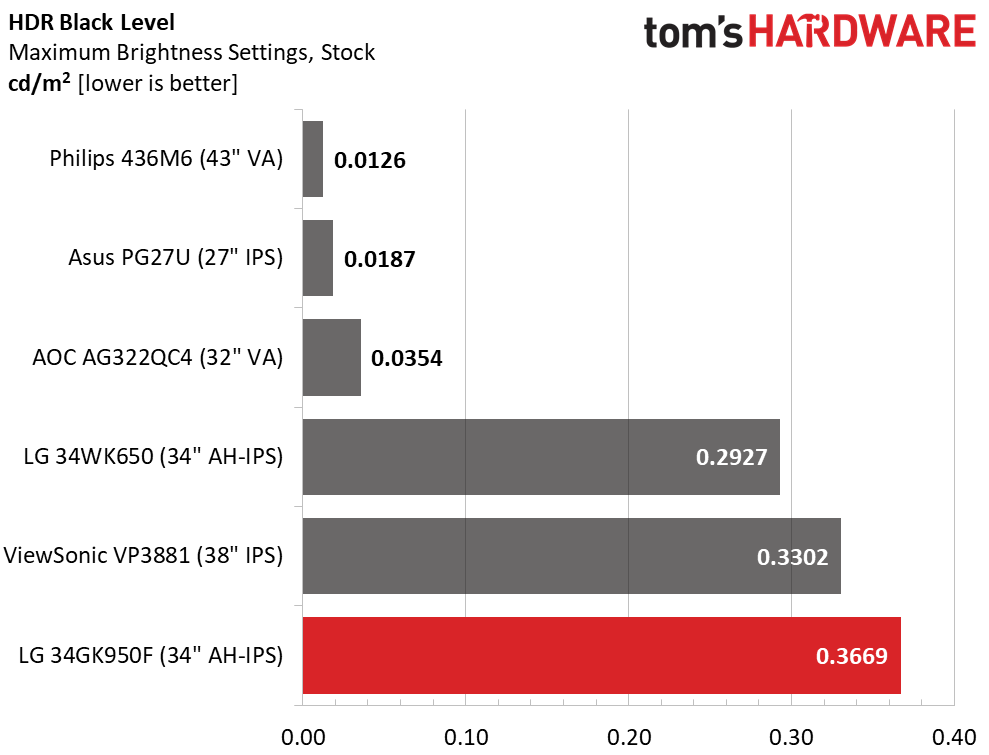
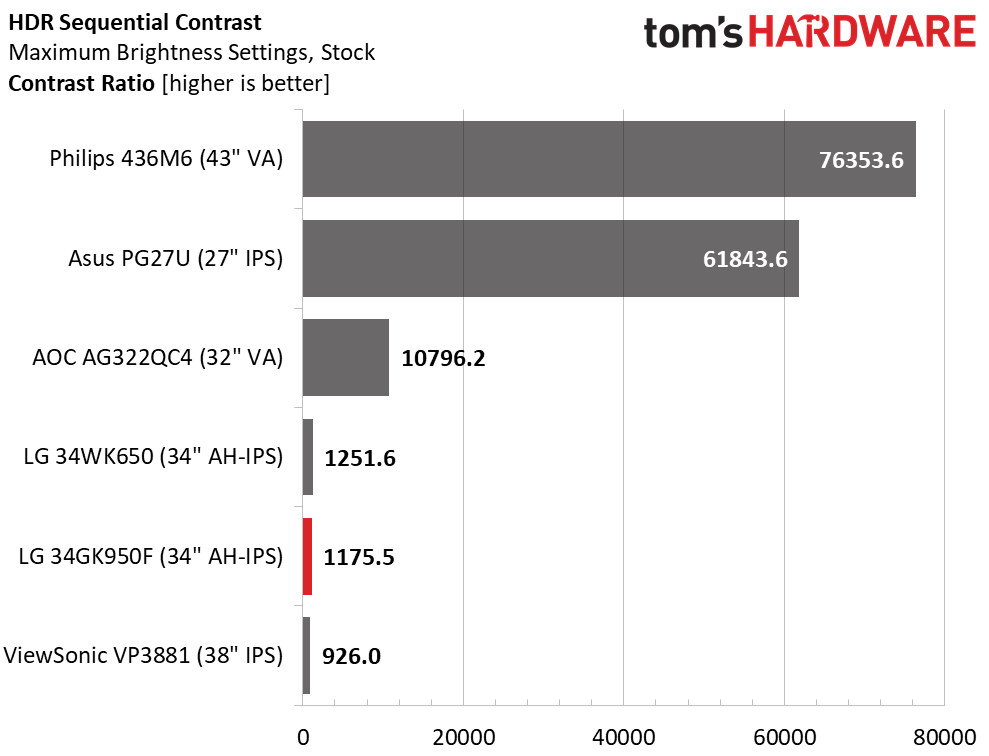
The 34GK950F comfortably exceeded the VESA 400-nit spec with a score of 431 (first graph).
HDR black levels (second graph) were a bit disappointing, however, as they are the same as what we measured in SDR mode.
HDR contrast (third graph) is slightly higher at 1,175.5:1. We could see a small difference with HDR signals, but it was subtle at best. It’s obvious that LG has not employed an aggressive dynamic algorithm like the Philips or AOC monitors, which are both edge-lit and virtual kings in the black level contest.
Grayscale, EOTF and Color
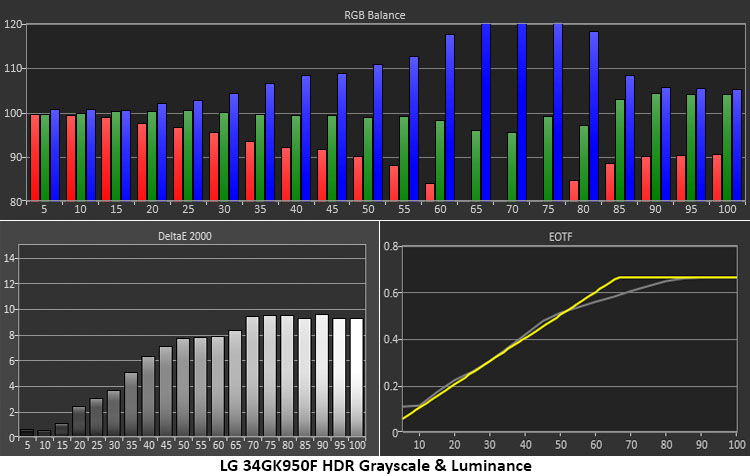
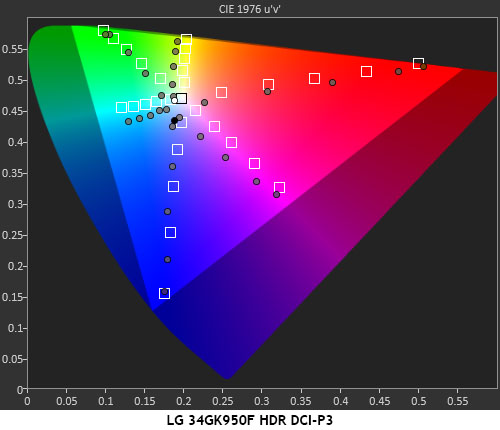
There are no adjustments available for HDR signals, but you can still select from multiple picture modes. All presented a somewhat-cool grayscale, but the errors aren’t too high. The clip point is 65 percent, and rather than a hard transition, LG chose a softer clip. This approach dulls highlights a little and takes the edge off the HDR effect. We’d rather see the trace follow the yellow line more closely.
Something you’re guaranteed to see in HDR mode is vividly saturated color. Not only does the 34GK950F cover more of DCI-P3 than most monitors, it pushes the saturation levels as brightness rises. When playing games or watching movies, color was vibrant and bold. Whites looked a little blue, but reds and greens popped in a way few monitors can match. While overall HDR accuracy is just OK, the effect has a solid impact.
MORE: Best Gaming Monitors
Get Tom's Hardware's best news and in-depth reviews, straight to your inbox.
MORE: How We Test Monitors
MORE: All Monitor Content
Current page: HDR Performance
Prev Page Grayscale, Gamma and Color Next Page Viewing Angles, Uniformity, Response and Lag
Christian Eberle is a Contributing Editor for Tom's Hardware US. He's a veteran reviewer of A/V equipment, specializing in monitors. Christian began his obsession with tech when he built his first PC in 1991, a 286 running DOS 3.0 at a blazing 12MHz. In 2006, he undertook training from the Imaging Science Foundation in video calibration and testing and thus started a passion for precise imaging that persists to this day. He is also a professional musician with a degree from the New England Conservatory as a classical bassoonist which he used to good effect as a performer with the West Point Army Band from 1987 to 2013. He enjoys watching movies and listening to high-end audio in his custom-built home theater and can be seen riding trails near his home on a race-ready ICE VTX recumbent trike. Christian enjoys the endless summer in Florida where he lives with his wife and Chihuahua and plays with orchestras around the state.